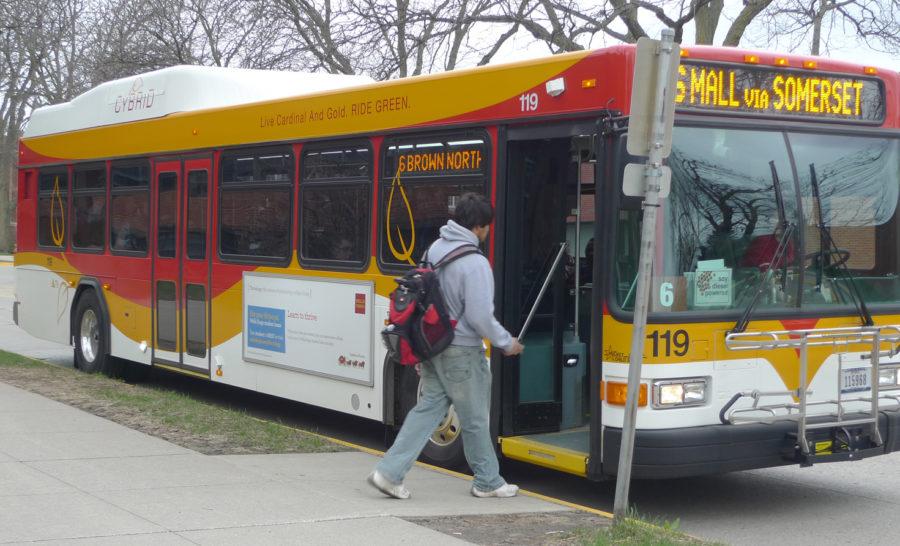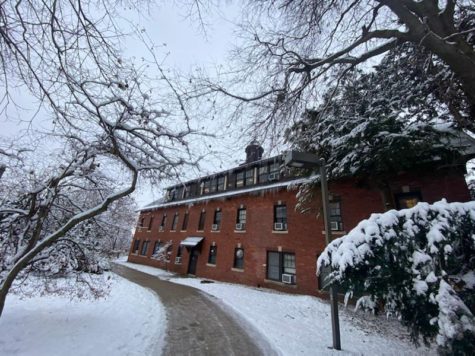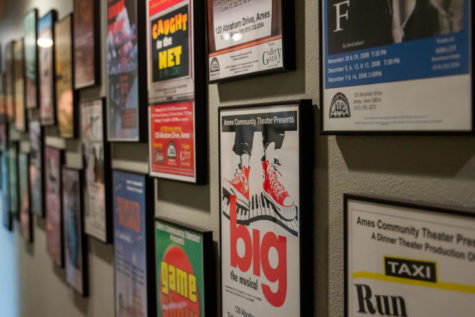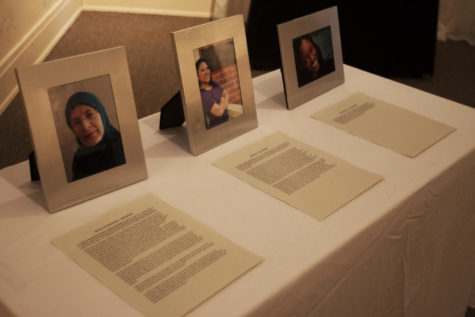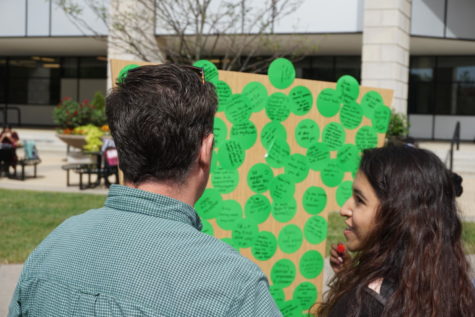Cybrids designed to lessen impact on environment
Photo: Yue Wu/Iowa State Daily
The Cybrids are 12 hybrid buses; they can store braking energy during stops and release it later to save energy on acceleration.
April 21, 2011
As Iowa State tries to become a more sustainable campus, new ideas are generated for ways to “go green”. At the beginning of the fall semester the ISU transportation system created the Cybrid in an attempt to add to the campus’ sustainability initiatives. Since then, the Cybrids have been fully integrated into the CyRide fleet, and more may potentially be added.
In fall 2010, CyRide added 12 hybrid buses to their fleet through grant funding. The Cybrids were added in hope of achieving more miles per gallon as well as cutting down on carbon monoxide emissions. Sheri Kyras, director of transit, said the Cybrids work a lot like a Prius.
“The Cybrids capture breaking energy while stopping and use that when they start accelerating again,” Kyras said. “It’s very beneficial because it’s not using the diesel fuel, which is where fuel is typically used the most: when accelerating from zero to 30 miles per hour in a short amount of time.”
While the Cybrids will eventually be able to save up to 23,000 gallons of fuel each year, they’re not quite at that stage. Kyras said the type of hybrid bus they’re using requires a completely new technology, and CyRide is still working with the manufacturer to increase miles per gallon to hopefully be at a 20 to 25 percent increase by the end of summer.
Once they get through the “break in” period of calibrating the hybrid systems, Kyras and others will be able to decide if they want to add more Cybrids to the fleet. Whether more of these buses are added depends on two main things.
“Cybrids are more expensive so we will need more grant funding,” Kyras said. “Also, we have to wait to see if they work properly and are benefiting the community the way we want them to.”
Finding more sustainable ways of transportation is a trend Kyras has seen happening at a lot of different universities. Along with using hybrid buses, another popular trend is using compressed natural gas in transit buses, but is a more expensive investment.
CyRide has also made some of the bus shelters around Ames solar powered to cut down on lighting costs. These are just some of the ways that the ISU transportation system is trying to lessen their impact on the environment.
“The environment is a big issue,” Kyras said. “And we all just want to do our part to reduce consumption and our effect on it.”

